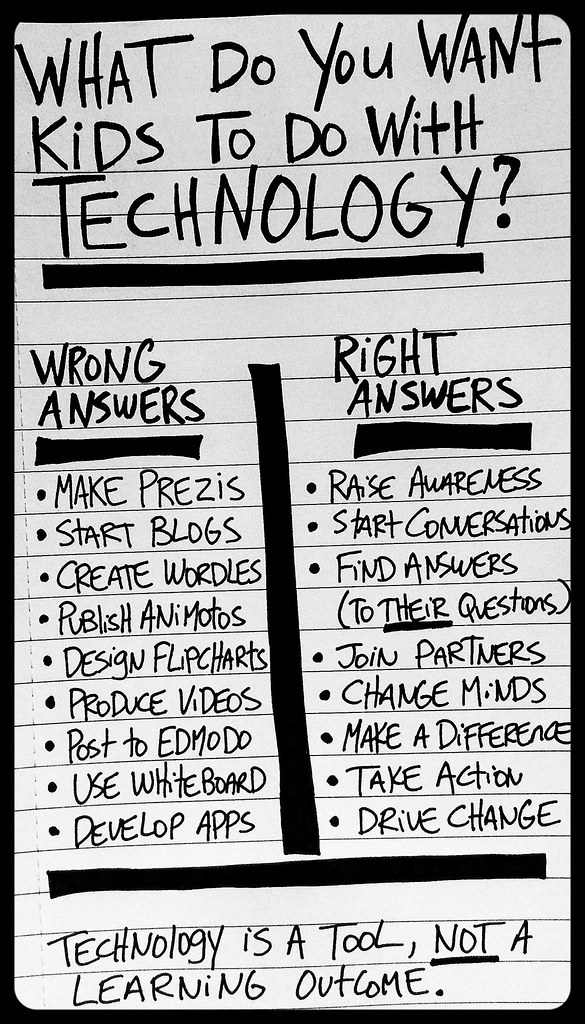I am a fan of questions.
Questions are good. When people are asking questions, you know they are thinking.
I much prefer that students ask questions in class than that they just nod along with whatever the teacher is saying. In fact, I get more worried when
no one is asking questions.
Sometimes I think it's our fault (lumping myself in as part of the problem here), by shutting down students' questions. Maybe it's because we're afraid we won't know the answers.
But what if we would embrace questions as a key part of teaching and learning? And not just teacher questions, but
students' questions?
Would school look different if teachers actively encouraged students to ask questions?
What would school be like if we expected five or ten or thirty answers every time the teacher asked a question?
What if we encouraged divergent thinking rather than convergent thinking?
What if we used students' questions and wonderings and curiosity as a launchpad for their learning?
What if we took students' thinking seriously--would they ask more questions and be more willing to express their ideas?
And what if, when students asked questions, we didn't immediately try to answer them? What if we asked questions in response? What if we would respond with, "Interesting! How could we find out? Where could we get more information about that?"
It's not that the teacher has to be the "knower-of-all-things" to transmit knowledge to the students. So often this is the way direct instruction happens. Nothing against direct instruction--there is definitely a time and a place for it. But let's
also consider the value of indirect teaching methods. Maybe this would invite students to take a more active, experiential role in their own learning? Maybe we need to talk less and ask more? Maybe we need to wonder along with our students?
I challenge you (and myself!): Let's embrace questions. Let's embrace wondering. Let's embrace thinking, pondering, innovating, interacting, and creating!






